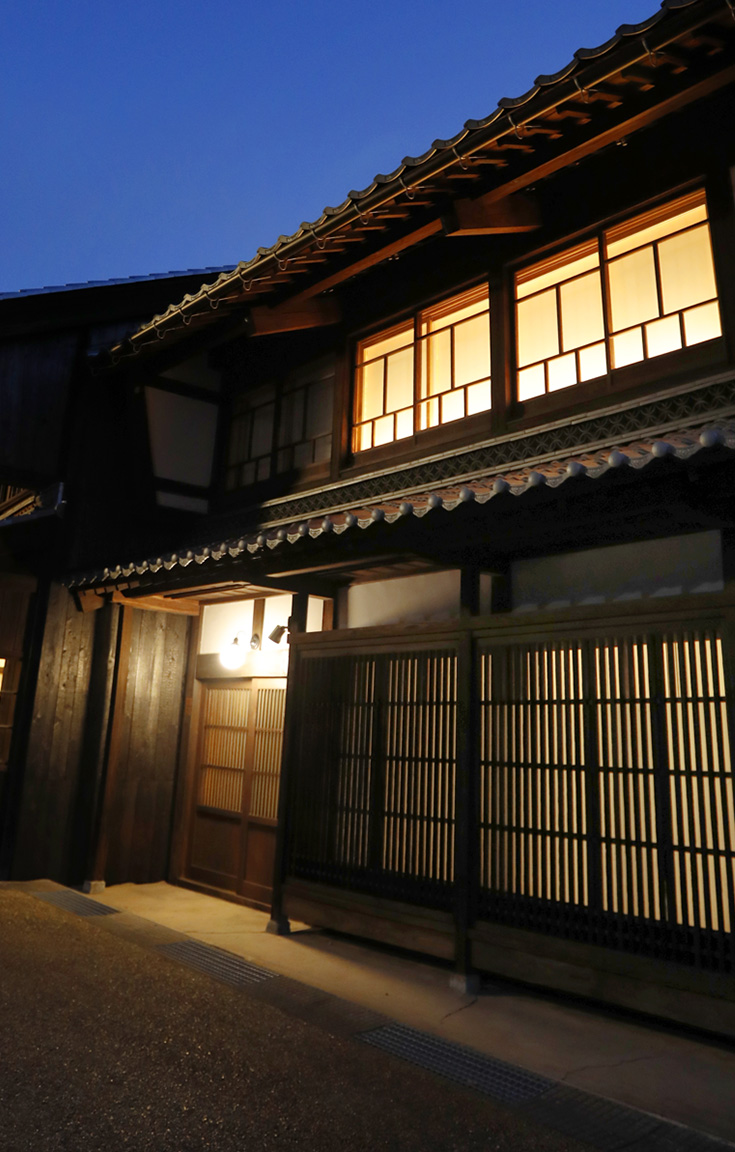Echizen Luru:
An Old Private Inn in a Large Lodging Town
An Old Private Inn in a Large Lodging Town



Imajo includes a sequence of mountain peaks. The town has a history as a place of rest and recovery for travelers, welcoming all who challenged the difficult mountain crossing. In the distant past, all from the Echizen Domain and other travelers who crossed back and forth to Kyoto or Edo would almost always stop in the town.
While lodgings were important for allowing travelers to rest and recover, their most important purpose lay elsewhere—as part of the chain of transit for cargo and communications. There were, therefore, numerous different critical facilities among the inns, including the "primary inn," "secondary inn," and "station post."
The primary and secondary inns were lodging facilities used by important figures, such as lords, government ministers, or court nobles. Samurai and general travelers used regular inns. Station posts dealt with cargo and letters, and always had horses and messengers on hand.

The road to Imajojuku, with the Hino River running alongside and surrounded by mountains, was completed by improvements to the Hokkoku-kaido road as ordered by Katsue Shibata in 1578. The first lord of the Fukui domain was Hideyasu Yuki, the second son of Ieyasu Tokugawa; he tailored the city for defense, and there are records from that time of many famous people passing through.
There are protruding roofs and sudden turns in the streets in many key locations, preventing one from seeing too far ahead. The houses lining the road show construction features for resisting fires and heavy snowfall, speaking to the knowledge and culture of the people who erected them.

During the Meiji Period, the Edo Period system of different types of lodgings faded from use. What is now the modern National Road 8 was also established, reducing the traffic through Imajo and thus its importance as a lodging town. However, in 1896, the Hokuriku train line between Tsuruga and Fukui opened. Imajo once again became a town supporting those travelers crossing the mountains, only this time they were coming in by train. The stretch between Tsuruga and Imajo, in particular, included one of the steepest inclines in Japan, which was thought possible to be managed by railroad technology at the time, requiring a supplementary engine to push the train from behind. The requirement for coupling, decoupling, and refueling meant that every single train would stop in Imajo.

Imajo was a place where travelers could buy a bite to eat, a drink, or a newspaper from vendors while the train was stopped there. The "Imajo Soba" noodle stands placed on the actual platforms became renowned across Japan for their excellent flavor as a stopover snack. With a big gap between hot and cold weather and plenty of pure snowmelt water, Imajo has cultivated buckwheat ("Soba" in Japanese) for generations, and the soba noodles made using it are absolutely delicious.

More time passed, and in 2021, Imajo was selected as a national Important Preservation District for Groups of Traditional Buildings. Buildings from the Edo Period through to the 1950s along a stretch of the Hokkoku-kaido road 1.2 km in length were selected as the target for the designation, speaking to the history of a lodging town that grew up in the snowy climes of the Echizen region. The town's layout and the road's width have been unchanged since that time, and with its strong relationship with the transportation of people, goods, and information, Imajo has developed its own unique culture and sights. It remains an invaluable heritage today, offering a glimpse into the lifestyles, wisdom, culinary culture, and commerce of the past.